Dzibilchaltun Mayan Ruins: Exploring The Secrets Of An Ancient Civilization
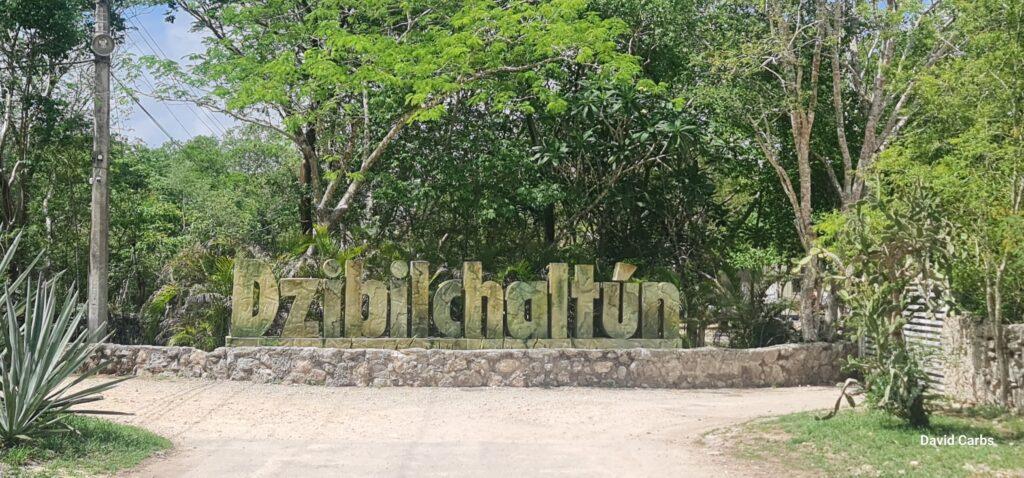
Dzibilchaltun Mayan Ruins is an ancient Mayan city located in the Yucatan Peninsula, Mexico. This site was built around 500 BC and was inhabited until the Spanish colonization of the region. The ruins are considered one of the most important archaeological sites of the Mayan civilization and have attracted visitors from all over the world.
Table of Contents
Quick facts about Dzibilchaltún ruins
1. Location: Dzibilchaltún is situated approximately 10 miles (16 kilometers) north of the city of Mérida, the capital of the Mexican state of Yucatán.
2. Historical Significance: The site has a long history of occupation, with evidence of settlement dating back to as early as the Preclassic period (circa 500 BCE). It continued to be inhabited through the Classic and Postclassic periods, making it one of the longest continuously inhabited Maya sites.
3. Main Plaza: The central area of Dzibilchaltún features a large open plaza surrounded by various structures, including temples, pyramids, palaces, and other ceremonial buildings. The structures were constructed over different periods and reflect the architectural evolution of the Maya civilization.
4. Templo de las Siete Muñecas: One of the most famous structures at Dzibilchaltún is the “Temple of the Seven Dolls.” It received this name due to the seven small effigy figurines found inside. This temple is particularly significant because the sun’s rays align with its entrance during the spring and fall equinoxes, creating a visually striking phenomenon.
5. Cenote Xlacah: Dzibilchaltún is home to Cenote Xlacah, a natural sinkhole that provided an important water source for the ancient inhabitants. The cenote played a significant role in the daily lives of the Maya people, as well as in their religious ceremonies.
6. Astronomical Significance: The alignment of structures at Dzibilchaltún, such as the aforementioned Temple of the Seven Dolls and other buildings, suggests a strong connection to astronomy and celestial events. The Maya had a sophisticated understanding of celestial cycles and integrated them into their architecture and rituals.
7. Archaeological Exploration: Dzibilchaltún has been the subject of archaeological exploration and study for many years. Excavations have revealed insights into Maya daily life, architectural techniques, urban planning, and religious practices.
8. Tourism: The ruins of Dzibilchaltún are accessible to visitors, and the site offers a unique opportunity to explore the history and architecture of the Maya civilization. It’s a relatively less crowded site compared to some of the more well-known Maya ruins in the region, such as Chichen Itza and Tulum.
Brief History of Dzibilchaltun Mayan Ruins
The exact origin of Dzibilchaltun is not known, but it is believed to have been founded around 500 BC by a group of Mayans who migrated from other parts of Mesoamerica. The city grew rapidly in size and importance during its early years, becoming an important trade center for salt, cotton, honey, and other goods produced by the surrounding area.
Importance of Dzibilchaltun Maya Ruins in Mayan culture
Dzibilchaltun played a significant role in Mayan culture as it was not only a political center but also a religious one. The site was home to several temples and altars that were used for ceremonial purposes, including offerings to deities associated with agriculture and fertility. It also served as a hub for trade with other Mayan cities throughout Mesoamerica.
Uncovering Mysteries at Dzibilchaltun Mayan Ruins
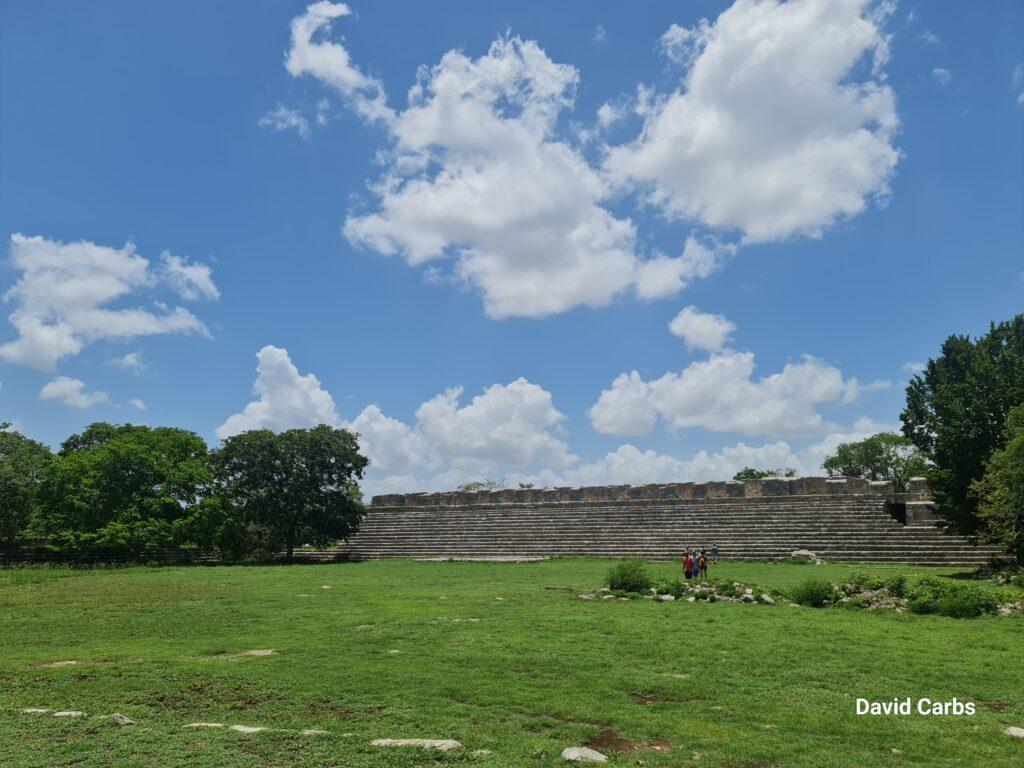
This article will delve into several aspects related to Dzibilchaltun Mayan ruins such as its layout and architecture, history and culture, notable structures such as El Templo de las Siete Muñecas (The Temple of Seven Dolls) and Xlacah Cenote among others; artifacts on display at the museum housed on-site; tourist attractions such as events held at different times during the year; myths and legends associated with the site. We will explore all these topics and more to gain a comprehensive understanding of the magnificent ruins that comprise Dzibilchaltun.
Location and Layout

Where is Dzibilchaltun Mayan Ruins Located?
The Dzibilchaltun Mayan Ruins are located in the Yucatan Peninsula, Mexico. This archaeological site is situated around 8 miles from Merida, the capital of Yucatan.
It covers an area of around 22 square kilometers and was one of the largest ancient Mayan cities in the region. The ruins are easily accessible and can be reached by car or bus.
The Layout and Architecture of Dzibilchaltun Mayan Ruins
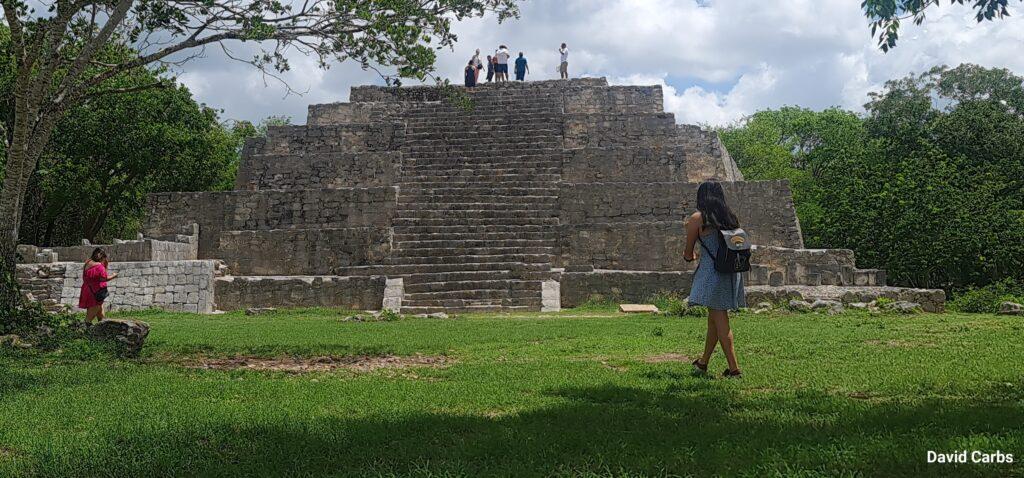
The layout of Dzibilchaltun is unique compared to other Mayan cities. The city was built on a series of low-lying hills, which created a natural drainage system for rainwater.
There are over 8,000 structures at the site, including plazas, temples, ball courts, and houses. One of the most significant features of Dzibilchaltun’s architecture is its use of a particular type of stone called “Limestone.” The limestone quarries were located nearby, allowing builders to access high-quality stones with ease.
The Significance of Layout in Mayan Culture
In Mayan culture, city planning was essential to creating sacred spaces that aligned with astronomical events like solstices and equinoxes. The layout at Dzibilchaltun demonstrates that same devotion to astronomy as many structures align with celestial bodies such as Venus.
The design also played a crucial role in everyday life for its inhabitants; it created efficient water drainage systems that prevented flooding during rainy seasons while providing an ample supply for irrigation purposes when needed. Dzibilchaltun Mayan Ruins’ location and layout demonstrate not only impressive architectural feats but also reflect how important astronomy was to Mayan culture while providing practical solutions for everyday life.
The Rise and Fall of Dzibilchaltun Mayan Ruins
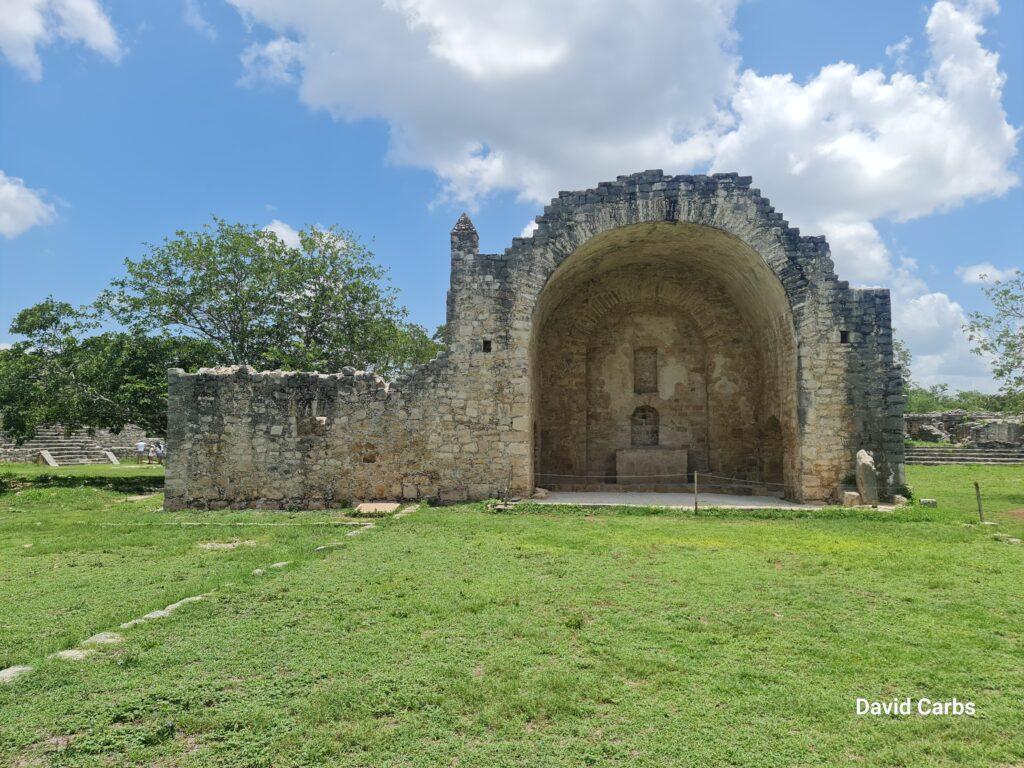
Dzibilchaltun was one of the most important cities of the ancient Maya civilization, located in the Yucatan Peninsula. Its history dates back to around 400 B.C., and it is believed to have been continuously inhabited until the arrival of the Spanish in the 16th century.
In its heyday, Dzibilchaltun was a thriving urban center with over 40,000 residents. The city’s decline began around AD 1200, when many of its inhabitants abandoned it due to environmental degradation and warfare with neighboring cities.
The Significance of Dzibilchaltun in Mayan Culture
Dzibilchaltun played a significant role in Mayan culture, both historically and religiously. It served as a political center for centuries, with its ruling elite exerting control over surrounding villages and towns.
It was also an important religious site, with numerous temples dedicated to various gods and goddesses that were central to Mayan beliefs. Additionally, Dzibilchaltun was home to several astronomical observatories that helped the Maya develop advanced calendrical systems.
The Role of Religion in Construction and Use
Religion played a vital role in both the construction and use of Dzibilchaltun’s monumental architecture. Many structures were built according to precise astronomical alignments that reflected Mayan cosmology.
The city’s temples were designed as sacred spaces where priests performed rituals intended to communicate with deities or commemorate important events such as victories or deaths. These ceremonies often included human sacrifice as an offering to appease gods or seek their favor.
Understanding the history and culture surrounding Dzibilchaltun is essential for appreciating its significance within Mayan civilization. The ruins continue to be a testimony not only to ancient engineering skills but to a unique way of life that has shaped the history and culture of the Yucatan Peninsula.
Notable Structures
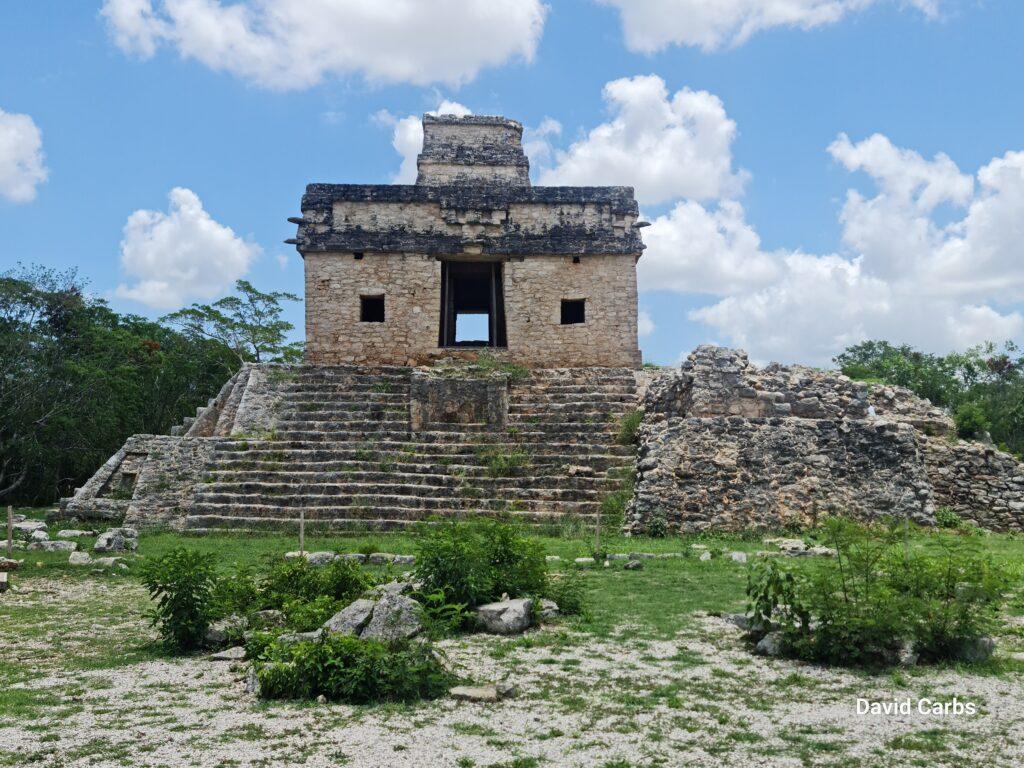
El Templo de las Siete Muñecas (The Temple of Seven Dolls)
One of the most famous structures in Dzibilchaltun Mayan Ruins is El Templo de las Siete Muñecas, also known as the Temple of Seven Dolls. This temple gets its name from the seven small figurines that were found inside during an excavation in 1957.
The temple was built using limestone blocks and features a number of unique architectural elements, including a series of columns and false doors that lead to smaller rooms within the temple. Historians believe that this temple was used for religious ceremonies and may have been dedicated to the Mayan goddess Ixchel.
The Xlacah Cenote
Another notable structure within Dzibilchaltun Mayan Ruins is the Xlacah Cenote. A cenote is a naturally occurring sinkhole that exposes groundwater, and these formations were often considered sacred by ancient Mayan people.
The Xlacah Cenote is one such example, and it was used for both religious ceremonies and practical purposes such as collecting water for daily use. Visitors can still see the cenote today, although it’s surrounded by dense foliage.
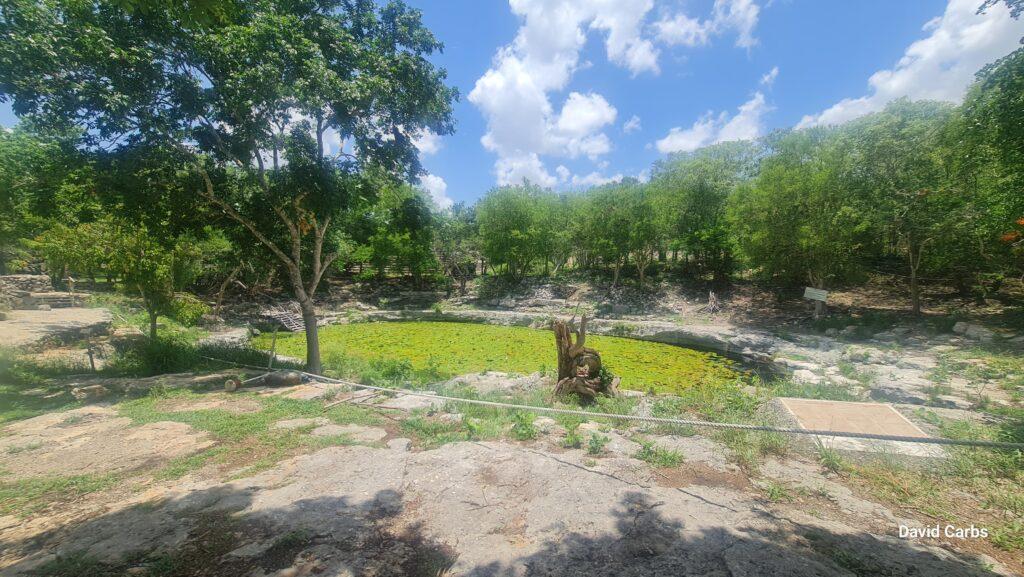
Other Notable Structures Within The Ruins
There are several other notable structures within Dzibilchaltun Mayan Ruins that are worth exploring. These include the Palace of the Stuccoes, which features intricate stucco carvings on its walls; The Temple of the Owls, which has been partially restored but still features many original architectural elements; and The House of Two Stories which contains rooms with unique designs resembling human skulls on one corner – believed to be part of some kind of ritual or religious significance.
These structures offer a glimpse into ancient Mayan life and architecture, showcasing their advanced building techniques and impressive artistic skills. Visitors to Dzibilchaltun Mayan Ruins have the opportunity to explore these structures up close and learn more about the Mayan culture that inhabited the region many centuries ago.
Artifacts and Exhibits
The Museum at Dzibilchaltun: A Collection That Displays Various Artifacts from Different Periods
The Museum at Dzibilchaltun is home to a vast collection of artifacts that showcase the history and culture of the Mayan civilization. Visitors can explore various exhibits located within the museum, which display artifacts from different periods, including Classic, Postclassic, and Colonial periods.
The exhibits in the museum include stone sculptures, pottery, jewelry, and other items that offer an insight into the life of the Mayans. One of the most fascinating displays in this collection is a series of intricate figurines that were discovered at the site.
The figurines depict human figures that are adorned with elaborate clothing and jewelry. These figurines are believed to have been used by the Maya elite for ceremonial purposes.
Please note that as of July 2023 the museum is under construction and not yet open to the public.
Archaeological Finds from Recent Excavations
In recent years, archaeological excavations have uncovered several new discoveries at Dzibilchaltun Mayan Ruins. These finds have offered a deeper understanding of how Mayan civilization developed over time and how life was like for ancient Mayans. One such discovery was a series of hieroglyphic inscriptions that were found on various structures within the ruins.
These inscriptions provide invaluable information about the political and social landscape of Dzibilchaltun during its heyday. Another significant discovery was a collection of bones found in one of the buildings at Dzibilchaltun.
The bones belonged to two individuals who were believed to have been sacrificed by Maya priests during a ritual ceremony. This find offers insight into how religion played a crucial role in everyday life for ancient Mayans.
Exhibits Showcasing How Life Was Like for Ancient Mayans
Visitors to Dzibilchaltun can also explore exhibits that showcase how life was like for ancient Mayans. These exhibits include reconstructions of various buildings, such as houses, granaries, and temples. Other exhibits display various tools and implements that were used by the Maya people in their daily lives.
Visitors can learn about the techniques used by Mayan farmers to cultivate crops or see a demonstration of how Mayans crafted pottery. One of the most fascinating exhibits is a replica of a Mayan ball court.
Visitors can learn about the rules of the game and witness a reenactment of an ancient ball game. This exhibit offers an insight into how sports played an important role in Mayan society and culture.
Overall, the artifacts and exhibits at Dzibilchaltun offer visitors an opportunity to explore and understand one of the most significant civilizations in history. The collections provide invaluable insights into how these people lived, worked and worshiped over many centuries.
Tourism
Exploring the Ruins

Dzibilchaltun Mayan Ruins is one of the most visited archaeological sites in Mexico, attracting many tourists from around the world. Visitors can explore the ruins by walking through its well-preserved structures and its museum that showcases artifacts discovered during excavations. The experience is made even more unique by featuring a cenote where visitors can swim or take a dip.
Special Events
Dzibilchaltun Mayan Ruins also hosts special events throughout the year, including cultural festivals and performances. The annual Spring Equinox is an important event for Mayans, and Dzibilchaltun hosts a special sunrise ceremony to commemorate it.
Practical Information
To ensure a smooth visit to Dzibilchaltun Mayan Ruins, there are some practical details that visitors should be aware of. The site is open every day except for Monday, and it’s advisable to arrive early in the day as it can become crowded later on. Additionally, visitors should wear comfortable shoes since there’s a lot of walking involved – sunscreen and mosquito repellent are recommended as well due to high temperatures and humidity.
Conclusion
The Dzibilchaltun Mayan Ruins offer an incredible look into Mayan culture and history. From its layout to its architecture to its unique artifacts discovered through excavation – this site has something to offer everyone who wants to experience ancient civilization first-hand.
Whether you’re interested in learning about religion or just want an opportunity for adventure – visiting Dzibilchaltun Mayan Ruins will surely captivate your imagination! Overall, exploring Dzibilchaltun Mayan Ruins offers not only a great tourist attraction but also gives us insights into ancient civilizations and their way of life while preserving history for future generations. Please keep in mind the Yucatan is scattered with Mayan ruins. Check out our list of the 8 most important Mayan ruins.


